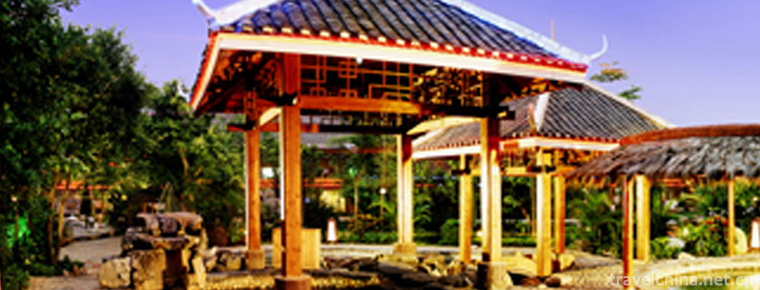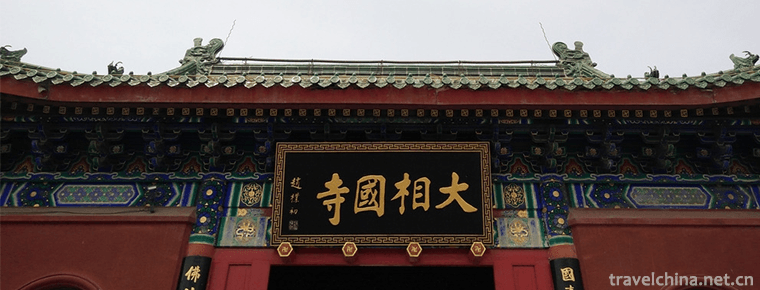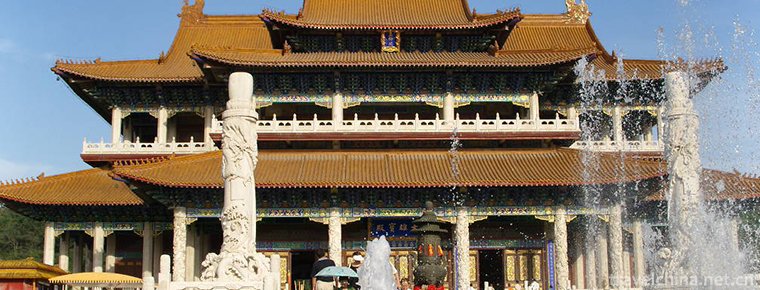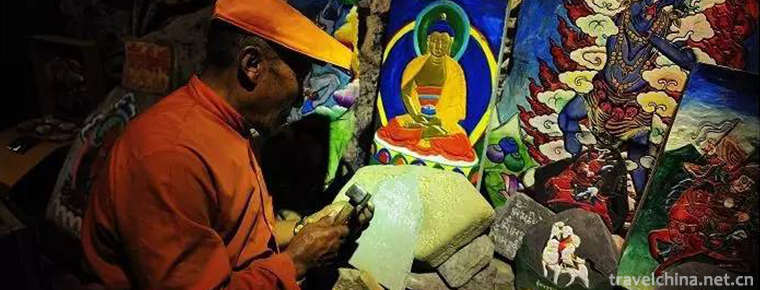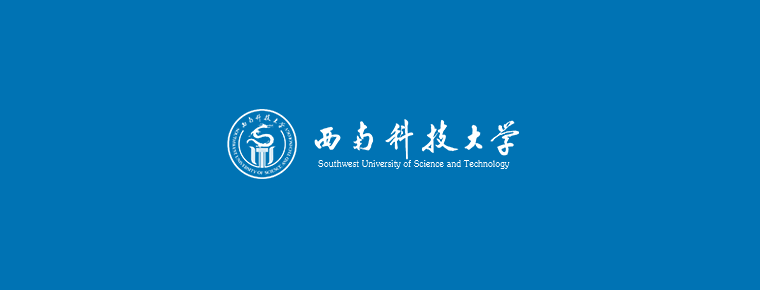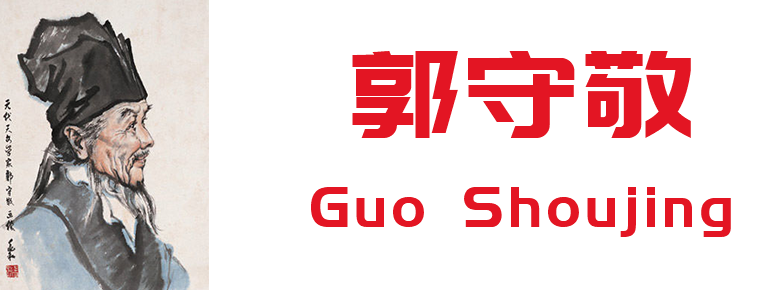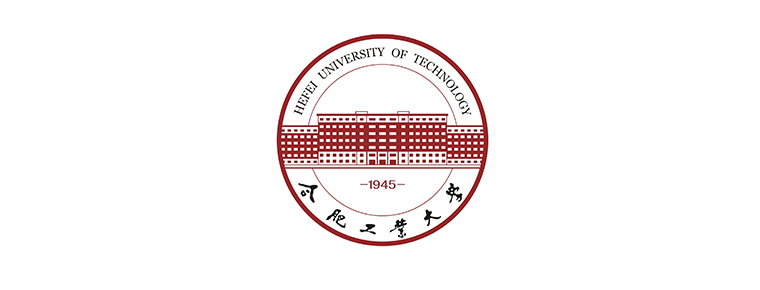Pingyao Ancient City Scenic Spot
Pingyao Ancient City Scenic Spot
Pingyao Ancient City is located in Pingyao County, central Shanxi Province. It was founded in Xuanwang Period of Western Zhou Dynasty (827-782 BC).
Pingyao, Shanxi Province, is known as one of the "four most well-preserved ancient cities", and is also one of the only two ancient cities in China that have successfully declared the world cultural heritage with the whole ancient city.
In 2009, Pingyao Ancient Town was named the most complete ancient county in China by the World Records Association. On July 13, 2015, Pingyao Ancient City became a national 5A tourist attraction.
Pingyao Ancient City is an outstanding example of ancient Chinese cities in the Ming and Qing Dynasties. Pingyao Ancient City preserves all its characteristics. Moreover, in the course of the development of Chinese history, a complete picture of extraordinary cultural, social, economic and religious development has been presented. (UNESCO World Heritage Committee)
On November 19, 2017, he won the annual reputation Award for tourist destinations.
The first batch of national practical education bases for primary and secondary school students.
Historical evolution
The ancient city of Pingyao was built during the reign of King Xuanwang of Zhou Dynasty from 827 B.C. to 782 B.C. and was garrisoned here by Yin Jifu, a general of the Western Zhou Dynasty.
The Spring and Autumn Period belonged to Jin State and the Warring States to Zhao State. Pingtao County in Qin Dynasty and Zhongdu County in Han Dynasty are the capital cities of clans and princes. The Northern Wei Dynasty was renamed Pingyao County.
In the early Ming Dynasty, the city wall was built to defend against the disturbance from the south by foreigners.
In the third year of Hongwu (1370 A.D.), the old wall was rebuilt and expanded, and bricks were wrapped in an all-round way. Since then, Jingtai, Zhengde, Jiajing, Longqing and Wanli dynasties have made ten repairs and repairs, renovated city buildings and added enemy platforms.
In the forty-third year of Kangxi (1703 A.D.), because the Emperor's Western Patrol passed through Pingyao, he built four-sided towers, which made the city more spectacular. The total circumference of Pingyao City Wall is 6163 meters, and its height is about 12 meters. Pingyao County Town with an area of about 2.25 square kilometers is divided into two different world styles.
On December 3, 1997, the 21th General Conference of the World Heritage Committee held by UNESCO in Naples, Italy, decided to include the ancient city of Pingyao as a whole in the World Heritage List. It is a physical specimen for the study of China's political, economic, cultural, artistic and religious development.
geographical environment
geographical position
Pingyao County of Jinzhong City (112.19 degrees east longitude and 37.21 degrees north latitude) is located in the central part of Shanxi Province in northern China, the middle reaches of the Yellow River and the southwest of Taiyuan Basin in the eastern part of the Loess Plateau. It is 616 kilometers northeast of Beijing, 90 kilometers north of Taiyuan, 543 kilometers west of Xi'an, 758 kilometers east of Tianjin Port and 2390 kilometers south of Guangzhou Coast. Pingyao County covers a total area of 1260 square kilometers.
Climatic characteristics
Pingyao Ancient City is a temperate monsoon climate, with distinct seasons and abundant sunshine. Summer is hot and rainy, winter is cold and dry. July is the hottest month in a year, and January is the coldest. The precipitation varies greatly between years. The distribution is uneven in a year, mainly in June, July, August and September.
Main attractions
Pingyao County Ya is located in the center of Pingyao Ancient City. It was built in the Northern Wei Dynasty and finalized in the Yuan, Ming and Qing Dynasties. The earliest preserved buildings were built in the six years from Yuan to Zhengzhou (1346). It has a history of more than 600 years. The whole Ya Office is situated in the north and South facing the south, with an axisymmetric layout. Its north-south axis is more than 200 meters long and its east-west axis is more than 100 meters wide, covering an area of more than 26,000 square meters. Pingyao County Ya is one of the four well-preserved ancient Ya in China, and it is also the largest existing county Ya in China. On May 19, 2004, the Eleventh Panchen Bailin County Ya inspected the county Ya with the words "the most ancient Ya in Pingyao County".
Rishengchang Ticket was founded in Qingdaoguang three years (1823). It was co-founded by Li Dajin, a wealthy businessman from Xidapu Village, Pingyao County, Shanxi Province, and Lei Lutai, general manager. The total number is located in the south of Xijie Road, a busy street in Pingyao County, Shanxi Province. It covers an area of more than 1600 square meters. It has compact land and distinct functions. It is the pioneer of China's national banking industry. It once manipulated the economic lifeline of the Qing Dynasty in the nineteenth century. Its semicolon is widely distributed in more than 30 cities throughout the country, as far as Europe, America, Southeast Asia and other countries. It is famous for "connecting the world".
Confucian temple is the place where Confucius is worshipped. Pingyao Confucian Temple is located in the southeast corner of Pingyao County. It was built in the early years of Zhenguan in Tang Dynasty. Its Dacheng Hall was rebuilt in Jin Dading three years (1163). It has remained its original appearance until now. It is the oldest temple in the existing Confucian temples at all levels in China. Pingyao Confucian Temple is situated in the north to the south, with a large scale and complete regulations. It was officially opened to tourists in 2004 and became one of the main cultural relics tourist attractions in Pingyao ancient city.
Qingxu view is the biggest Taoist view in the ancient city. According to the traditional layout of East Foxi Road, it is located in the north of the east section of East Street. Qingxuguan was founded in the second year of Tang Xianqing (657). Its original name was Taiping Guan. In the first year of Song Zhiping (1064), it was changed to Qingxuguan. In the early Yuan Dynasty, it was renamed Taiping Xingguo Guan, and later changed its name to "Taiping Chongshenggong". In the Qing Dynasty, it was renamed Qingxu Guan. The vicissitudes of history, the vicissitudes of the world and the passage of time have left few Taoist idols here. In 1998, Qingxuguan was opened as a comprehensive museum in Pingyao County.
Pingyao City Wall was built in Xuanwang Period of Western Zhou Dynasty (827-782 B.C.) as rammed tuchengyuan. In the three years of Hongwu reinvention in the Ming Dynasty (1370), the original "nine miles and eighteen steps" was expanded to "twelve miles and eight minutes and four centimeters" (6.4 kilometers), and the rammed earth wall was transformed into a brick wall. In the Ming and Qing dynasties, there were 25 repairs successively. The wall was square in plane, 6162.7 meters in circumference, 10 meters in height, 2 meters in height and 3-5 meters in width. The wall was compacted with plain earth, covered with green bricks, and 77 drainage tanks were built with inner wall bricks. On the top of the wall, a 2-meter-high stacking wall (also known as the horse-retaining wall) is built to take the number of Confucius disciples and sages, with 3,000 stacks, 72 enemy buildings and a parapet built inside. There are four corner towers, some general tables on the East wall, and Kuixing Tower and Wenchang Pavilion on the top of the Southeast corner.
Urn city, refers to a small town built outside the city gate, also known as the Moon City, to enhance the defensive capacity of the city pool. In Pingyao ancient city, the orientation of Wengcheng City Gate and Dacheng City Gate is mostly 90 degrees (except for the south gate and the Lower East gate). Even if the enemy breaks through the Wengcheng City Gate, there is also the main city gate defense. Because the narrow area in Wengcheng is not easy to launch a large-scale military attack, which delays the enemy's attack speed. The guards on the top of the city wall can stand high and shoot from all sides, killing the enemy and striking the main city gate. It means closing the door to beat the dog and catching turtles in the urn.
Built on the top of the city gate in the city pool, it was sometimes called "Jiaolou" in ancient times. There are six towers on Pingyao City Wall, which were built in Ming Dynasty. In the forty-second year of Kangxi reinvention (1703), they were rebuilt. They are 16.14 meters high, 13.72 meters wide and 10.04 meters deep. The model is simple and elegant, and the structure is dignified and steady. The city building is an exquisite and beautiful high-rise building on the top of the city wall. It is an important high-altitude defense facility for a city pool, which usually climbs high and looks at it. The wartime commander sits in the town and commands it.
The corner building built on the four corners of the city wall is mainly used to make up for the defensive weak links at the corner of the city wall, so as to enhance the defensive capacity of the whole city wall. The corner building refers to the Xiadi Tower in the northwest corner and the Qiyue Tower in the northeast corner respectively. The Ruiwang Tower in the southwest corner and the Ningxiu Tower in the Southeast corner.
Located on the top of the wall between the upper east gate and the Lower East gate, the Point General Platform is now a brick platform. Legend has it that after King Xuan of Zhou took office in 827 B.C., Yin Jifu, a general, was sent to lead the Northern Expedition and Lianzhen Lianjie. Later, he was ordered to enlist troops in Pingyao, build more walls, and train soldiers here to practice martial arts. In the mid-Ming Dynasty, in memory of Yin Jifu's achievements, Gaozhen Temple was built at Yin Zengdian military parade. When the city walls were repaired in Ming and Qing Dynasties, the "Gaozhen Temple" was connected into a whole. It was a broad terrace on the top of the city, overlooking the mountains and feeling relaxed and happy. The dragon flag is timid in the year of driving.
"Horse face" is the attached pier protruding outward in the city wall, because it is slender, like the face of a horse, so it is called. "Horse face" not only strengthens the firmness of the wall, but also eliminates the dead corner of the battlefield in the city pool guard battle: once the enemy soldiers are facing the city, the guards on the adjacent horse face can organize a cross-shooting network, so that the offender is defeated by the enemy on both sides. Pingyao City Wall has a horse face every 60-100 meters, and there are towers on the horse face, which are called "enemy buildings".
Pingyao City has six ancient city gates, two East and two west. A bird's eye view of the ancient city of Pingyao shows that it is the same tortoise that wants to move. The four gates of East and West are similar to the four legs of the tortoise, so there is the saying of "tortoise city" among the people. Beyond the South Gate, the ancient Zhongdu River meandered by, which aroused the feeling of the ancient literati that "the tortoise plays in front of the water, the mountains and rivers rise in the sun, and the city is at stake, so as to use it". Tortoise is a symbol of auspiciousness and longevity. The theory of "tortoise city" originates from the worship of "four spirits" by the ancients. The implied meaning of "tortoise city" is a golden Soup for long-term stability.
Zhenguo Temple is located in Haodong Village, 12 kilometers northeast of Pingyao County, formerly known as Jingcheng Temple, which was changed into Zhenguo Temple in the nineteenth year of Jiajing in Ming Dynasty. It was built in the Five Dynasties and the Northern Han Dynasty. It is only one kilometer from Hongshan Station of Tongpu Railway. The temple is divided into two parts: Tianwang Dian, Wanfo Dian and Sanfo Tower from south to north. Wanfo Hall is the main building of the front yard. It is one of the oldest existing wooden structures in China. Although it is small in scale, it has a magnificent shape and great momentum. There are 14 painted sculptures in the temple. In the middle of the temple, there are statues of Sakyamuni. Two disciples, Kaya Ye and Ananda, stand around. The Buddha is tall, dignified and has a strong Mid-Tang style.
Shuanglin Temple was built in Wuping, Northern Qi Dynasty (571 A.D.). It is situated in the north and faces the south. The Temple group covers an area of about 15,000 square meters, which is divided into two parts: East and west. In the west, there are temples and courtyards along the central axis, which are composed of ten palaces. The front courtyard is the Sakya Hall, the Arhat Hall, the Wusheng Hall, the Land Hall, the Yanluo Hall and the Heavenly King Hall; the middle courtyard is the Daxiong Hall and the Qianfo Hall and the Bodhisattva Hall on both sides; and the back courtyard is the Niangniang Hall and the Zhenyi Temple. The eastern part is Chanyuan, Jingfang and so on. There are more than 2000 painted statues from Yuan Dynasty to Ming Dynasty (13th to 17th centuries A.D.) in the ten main halls of the temple, which are known as "treasure house of painted sculpture art".
The traffic vein of Pingyao ancient city is composed of four streets, eight streets and seventy-two grasshopper lanes. South Street is the central axis of Pingyao Ancient City. It connects the East and west streets from north to the south. It runs through the South and North with ancient city buildings. On both sides of the street, there are many old brands and traditional shops. It is the most prosperous traditional commercial street. During the Qing Dynasty, South Street controlled more than 50% of the financial institutions in China. It is known as "Wall Street" in China. West Street, West from Ximen (Fengyimen), East and South Street intersect at the North end, and East Street is a straight main street. Rishengchang, the first famous ticket number in China, was born on the West Street of the ancient city and is known as the "First Street of Finance in the Qing Dynasty". East Street, from the east to the south, intersects the north end of the Dongmen (pro-Hanmen) and Xihe South Street, which forms a straight main street with the West Street. North Street, North Gate (Arch Pole Gate), Nantong West Street in the middle.
Development and construction
Construction course
In 1986, the State Council announced Pingyao as one of the second batch of national historic and cultural cities.
In December 1997, the whole ancient city successfully declared the world cultural heritage.
In September 1999, Pingyao County Tourism Bureau set up a separate column from Pingyao County Cultural Relics Tourism Bureau for the need of tourism development.
Since 2000, the activities of "I celebrate the New Year in Pingyao" and the Shanxi Business Society Fire Festival have gradually developed into a series of activities to celebrate the Spring Festival in Pingyao, which are held in Pingyao Ancient City from December 23 to January 16 every year.
In 2001, the first Pingyao International Photography Exhibition was held.
On November 19, 2007, Pingyao Ancient City was awarded the honorary title of "China's Best Leisure Tourism County" and "China's Top Ten Ancient Cities" by the Organizing Committee of China Tourism Forum.
In 2013, China's first large-scale situational experience performance project "See Pingyao again" was launched.
September 13, 2014, Shanxi Pingyao County Urban and Rural Planning Bureau in 2012 launched the first batch of hundreds of years of ancient residential renovation projects have entered the end stage. The government invested 67 million yuan to compensate the first batch of 48 private traditional dwellings for repairs, thus restoring the traditional style of the century-old dwellings. In 2014, the Planning Bureau launched the second batch of renovation projects for 39 households, which will be formally carried out after the renovation plan is finalized.
On July 13, 2015, Pingyao Ancient City was rated as a national 5A tourist attraction.
brand building
In 1986, Pingyao County was the second batch of famous historical and cultural cities in China, and Pingyao City was one of the four ancient cities in China.
In December 1997, one of the only two ancient counties in China that successfully declared the world cultural heritage with the whole ancient city.
In 2005, Pingyao International Photography Exhibition was awarded "China's Ten Most Influential Festival Events" by the International Federation of Festivals (IFEA).
On April 9, 2006, the Global Times selected Pingyao as one of the "50 places in China that are most worth visiting by foreigners".
On November 19, 2007, Pingyao Ancient City was awarded the honorary title of "China's Best Leisure Tourism County" and "China's Top Ten Ancient Cities" by the Organizing Committee of China Tourism Forum.
On December 14, 2007, Pingyao Ancient City was awarded the title of "National Tourist Card"
In 2009, Pingyao Ancient City was honored as the most complete ancient county in China by the World Records Association.
The New York Times ranked Pingyao as the world's 41 best places to visit in 2011.
In 2012, "Pingyao Year of China" was awarded two national honors, the "Top Ten Festival Events in China in 2012" and the "China Convention and Exhibition Industry Annual Award".
On November 6, 2013, the world's top 100 high-priced tourist destinations list was officially released in 2014. Pingyao Ancient City ranked in the top 10, ranking eighth in the world.
On November 12, 2013, the 4th China's most desirable place was awarded one of the 20 "most desirable places in China" by China Tourism Television Association.
On January 8, 2014, the 2nd International Chinese Media Award was announced recently. Pingyao Ancient City was honored as China's top ten charming small cities.
On April 17, 2014, the 2nd China Cultural Tourism Brand Building and Development Summit was selected as "China Cultural Tourism Famous Scenic Spot" .
On July 13, 2015, Pingyao Ancient City became a national 5A tourist attraction.
On November 17, 2017, Pingyao Ancient Town was rated as the top ten ancient villages and towns favored by netizens in 2017.
History of application
Cause of application for Memorial
Pingyao is the only complete ancient city of Chinese Han nationality in the world. It was declared as a famous historical and cultural city in 1986. Due to the deviation of ideology and protection system, the dilemma of protection of famous cities and economic and social development is very difficult, and the financial revenue is insufficient. In order to get rid of the predicament, in 1992, we began to explore hard .
History of application
Initially, Wang Zhiyi, deputy county governor of Pingyao County, took part in the training of UN Habitat Center and first proposed Pingyao's application for heritage. His initial test failed .
In December 1992, Cao Changzhi, deputy director of the Shanxi Provincial Construction Department, wrote to the then governor of Shanxi Province, suggesting that we should change our concepts and form a virtuous circle through the combination of ancient city protection and tourism development, so as to inject vitality into Pingyao .
In May 1993, Border Baolian of the Construction Department published a signed article, and then put forward that Pingyao ancient city should take the road of protection and development, which attracted the attention of the State Council . •
According to the requirements of the leadership of the State Council and the instructions of the governor, the Shanxi provincial government decided that the Department of Construction, together with the Bureau of Cultural Relics, the Pingyao County Committee and the county government, would study and compile the Strategy for the Protection and Development of Pingyao Historic and Cultural Cities under the chairmanship of Cao Changzhi, thus innovating the general idea of "combining protection with development, seeking protection, protection and development at the same time".
On June 9, 1994, well-known experts gathered in Pingyao to demonstrate the strategy for the protection and development of Pingyao's historic and cultural cities. They highly appraised the overall idea with distinctive features. Strategic research can be used as an important decision-making basis for Pingyao's future protection and development. At the suggestion of Wang Zhiyi, Cao Changzhi sincerely invited senior experts, Zheng Xiaoxie and Luo Zhewen, vice-chairmen of the National Committee of Experts on the Protection of Famous Historical and Cultural Cities, to lead the appeal. On June 12, the General Assembly unanimously adopted the Pingyao Initiative. On September 13, Cao Changzhi signed the "Request for the Declaration of Pingyao Ancient City as a United Nations World Cultural Heritage" to the Ministry of Construction. At that time, the Secretary and governor of Shanxi Provincial Party Committee wrote the inscription of "Strategy for the Protection and Development of Pingyao Historic and Cultural City". On June 19, the Ministry of Construction and the State Administration of Cultural Relics of Zheng Xiaoxie once again recommended Pingyao to apply for the ruins. Subsequently, nine heads of ministries and bureaus went to Pingyao for inspection and guidance .
On June 20, 1996, Pingyao declared the text of the World Cultural Heritage Site. Drawings, pictures and video materials were completed, with emphasis on the protection and renovation of the ancient city. On July 30, the Shanxi provincial government set up a leading group of Pingyao's Heritage Application work. The then governor and deputy governor went to work in person .
Successful inscription
On November 26, 1997, a Chinese delegation headed by Wang Jinghui, Ma Yansheng, Guo Jun, Cao Changzhi and Xu Wentao attended the 21st World Heritage Conference in Naples, Italy. At 19:04 on December 3, the General Assembly considered the adoption of Pingyao Ancient City as a World Heritage Site .
On January 4, 1998, the Shanxi Provincial Government held a press conference. On May 25, UNESCO issued the World Cultural Heritage Certificate .
Tourist guide
Tickets for scenic spots
1. Pingyao Ancient City Pass: Full price 130 yuan/person half price 65 yuan/person (Pingyao Ancient City tickets do not need online booking, scenic window can be purchased)
2. Shuanglin Temple: 35 yuan/person half-price ticket 15 yuan/person
3. Zhenguo Temple: 25 yuan/person half-price ticket 10 yuan/person
4. Preferential policies: Children under 1.2 meters, servicemen, disabled persons and the elderly over 60 years of age are given free tickets with valid certificates, and teenagers and students under 18 years of age (including 18 years of age) can buy half-price discounted tickets with valid certificates.
Opening Hours
Peak season (April-October): 08:00-18:30
Off-season (November-March): 08:30-18:00
Traffic guide
Aircraft: If you want to go to Pingyao by plane, you usually fly to Taiyuan Wusu International Airport first, then transfer from Taiyuan to Pingyao by coach or train. Whether it is by coach or train, it takes about an hour and a half to arrive in two hours. The airport group company station from the airport can reach Taiyuan Jiannan Bus Station, Taiyuan Bus Station and Taiyuan Railway Station by No. 201, from which all three stations can go directly to Pingyao.
Train: Pingyao Railway Station is located on the west side of the ancient city, only 300 meters from the northwest corner of the ancient city. The trains to Pingyao are all passing trains. Apart from the cities in Shanxi Province, they can also go directly to Beijing, Chongqing, Guangzhou, Chengdu, Xi'an, Hohhot, Lanzhou and Tangshan by train. Pingyao Gucheng Station (MTS) was officially opened in July 2014.
Bus: Pingyao Ancient City Highway is relatively developed, but because Pingyao Bus Station mainly operates provincial routes, it is most appropriate to transfer from Taiyuan to Pingyao.








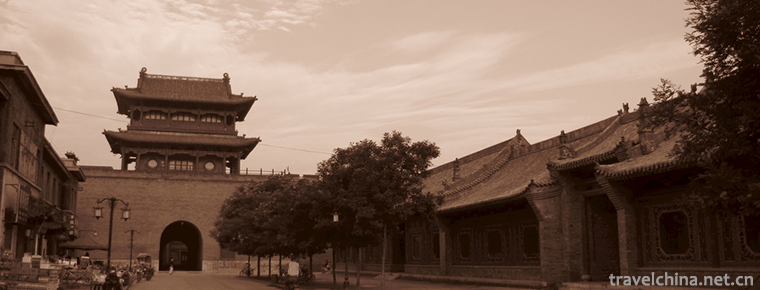
-
Jiuzhaigou Valley Scenic and Historic Interest Area
Jiuzhaigou: World Natural Heritage, National Key Scenic Spots, National AAAAA Class Tourist Scenic Spots, National Nature Reserves, National Geoparks, World Biosphere Reserve Network, is the first nat.
Views: 200 Time 2018-10-13 -
Steamed chicken feet with oyster sauce
Oyster Emperor steamed chicken feet, a featured delicacy, the main raw materials are chicken feet, small red pepper, oyster oil and so on, suitable for all ages..
Views: 227 Time 2018-11-02 -
The daxiangguo Temple
Daxiangguo Temple, formerly known as Jianguo Temple, is located in the western section of Kaifeng Freedom Road. It is a famous Buddhist temple in China. It was founded in Tianbao, Northern Qi Dynasty.
Views: 205 Time 2019-01-07 -
Jade Buddha Garden
Yufo Garden is a famous tourist attraction in Anshan. It is located in the core scenic area of Yufo Mountain. It covers an area of 270,000 square meters. It is surrounded by mountains on three sides a.
Views: 103 Time 2019-03-06 -
Tibetan Gesar Painted Stone Carvings
Tibetan Gesar painted stone carvings belong to a relic of Chinese Tibetan Gesar culture. They are mainly distributed in Seda, Shiqu and Danba counties in Ganzi Tibetan.
Views: 113 Time 2019-04-06 -
Southwest University of Science and Technology
Southwest University of Science and Technology is located in Mianyang City, Sichuan Province. The school is a university built jointly by the Sichuan Provincial People's Government and the Ministry of.
Views: 210 Time 2019-08-31 -
Guo Shoujing
Guo Shoujing (1231 - 13 16). Xingzhou Xingtai county (now) Hebei Province Xingtai City People. Yuan Dynasty Famous astronomers, mathematicians, experts in Hydraulic Engineering Early teacher Liu Bin Z.
Views: 286 Time 2019-09-07 -
Hefei University Of Technology
HeFei University of Technology (Hefei University of Technology) is directly under the Ministry of education of People's Republic of China. National Key Universities By Ministry of Education , Anhui Pr.
Views: 260 Time 2019-11-11 -
Sports in Luzhou
By the end of 2017, there were 1654 fitness facilities and venues in Luzhou City, and 1.093 million person times of physical exercise were opened free of charge in the whole year. Six municipal level competitions including track and field, football (spring League), badminton.
Views: 382 Time 2020-12-14 -
Mineral resources in Suining
The mineral resources with more reserves in Suining City mainly include oil, natural gas, well salt, placer gold, limestone, etc., especially natural gas and brine resources. Suining has developed and utilized 7 kinds of mineral resources, including shale mine.
Views: 194 Time 2020-12-16 -
Plant resources in Guangan
The forest vegetation in Guang'an City belongs to the vegetation area of evergreen broad-leaved forest and coniferous broad-leaved mixed forest in the middle subtropics. Gymnosperms include Pinaceae, Cupressaceae, Ginkgo biloba and Metasequ.
Views: 300 Time 2020-12-19


